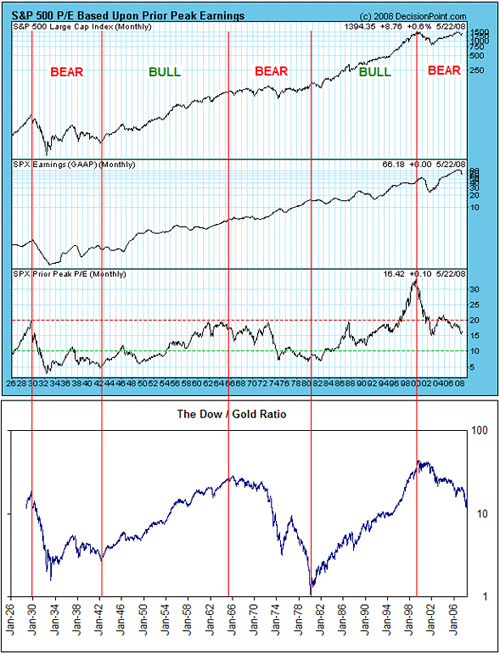|
|||
The Stock Market's Secular TrendSteve Saville
This is a topic we've covered numerous times over the years, but it's so important that we are re-visiting it in today's report. There's a big difference between a stock market that's rising in real (purchasing power) terms and one that's only rising due to currency depreciation. The reason is that a smart person invests to obtain more purchasing power, not more money. To put it another way, the amount of money you have is meaningless; what matters is the amount of purchasing power you have. At this time, for example, someone with a net worth of 100 million Zimbabwe dollars would be considered poor whereas someone with a net worth of 100 million US dollars would be considered rich; but if the US$ continues to lose purchasing power then at some point in the future a person with a net worth of 100 million US dollars will not be considered rich. Further to the above, the stock market's secular trend can't reasonably be determined by referring to nominal price changes. In particular, just because the stock market happens to be making new highs in nominal price terms doesn't mean that a secular bull market is in progress. If it did -- that is, if the main consideration was the nominal price change -- then the richest people in the world today would be those who invested in the Zimbabwe stock market five years ago. As discussed in many previous commentaries, the best way to 'see' the US stock market's secular trend is to look at a long-term chart of either the market's valuation (price/earnings ratio) or the market's performance relative to gold. As illustrated by the following chart-based comparison of, from top to bottom, the S&P500 Index, the earnings of the S&P500 Index, the S&P500's price/peak-earnings ratio, and the Dow/Gold ratio, over the past 80 years these alternative ways of ascertaining the stock market's real long-term trend have always yielded the same result.  The reason why the stock market's REAL long-term trend is so clearly defined by long-term trends in valuation and performance relative to gold is that investors, as a group, will invariably pay less for earnings that are perceived to be artificially boosted by inflation than for earnings that are perceived to be the result of real (sustainable) growth. Notice, for example, that the S&P500's earnings grew just as rapidly during the secular bear market of 1966-1982 as during the secular bull markets of 1942-1966 and 1982-2000. The difference is that during 1966-1982 there was increasing recognition of an inflation problem, leading to the compression of price/earnings multiples and dramatic weakness in the stock market relative to gold. Nobody can make predictions with absolute certainty because the future is unknowable, but the performances of the S&P500's price/earnings ratio and the Dow/Gold ratio constitute very powerful evidence that a secular bear market commenced during 1999-2001 and is not yet close to being over. Steve Saville Regular financial market forecasts and analyses are provided at our web site: We aren't offering a free trial subscription at this time, but free samples of our work (excerpts from our regular commentaries) can be viewed at: http://tsi-blog.com Saville Archives |
